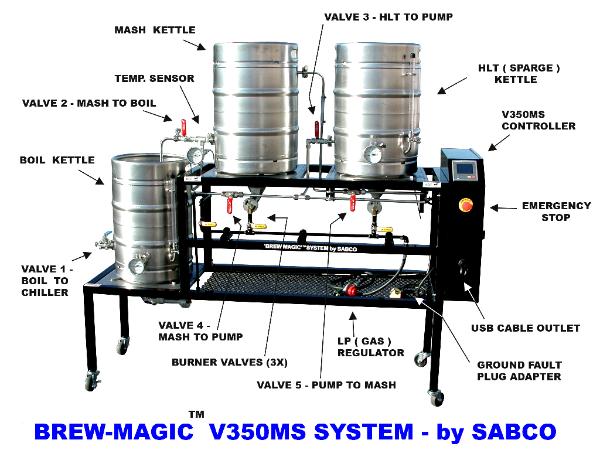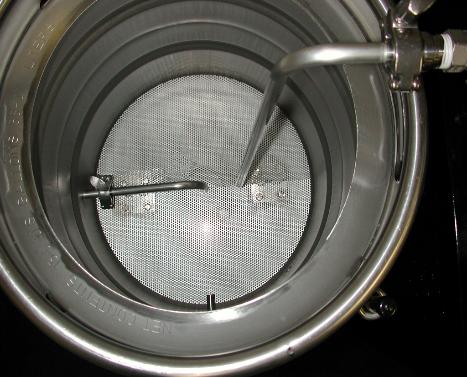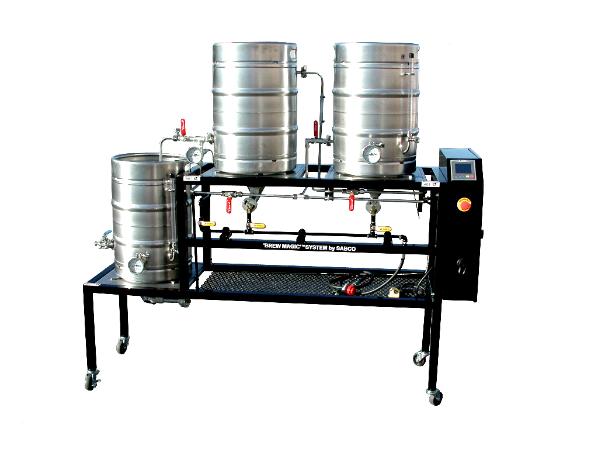
Hi Denny!
Interesting project indeed!
SWP idea's read like the right way to go and I would do the same for the larger sized couplers as well, then you can come out and just seal weld the seams either autogenously or with filler at a very low current to prevent excessive penetration which more than likely become "Sugared" which means that it will be exposed to the atmosphere, become contaminated, and even with pickling & passivation after the welds are completed, still become a potential localized corrosion site in the vessel...
I have just a couple of questions regarding the use of these kegs...
(1) First off, since it's going to be a food grade item for dispensing home brewed beer, then will the inside walls of the kegs be pickled and passivated before you start welding or will they perform this operation after the 3 couplers and 2 larger couplers on both the tops and bottoms of each keg are welded together? I ask this because it seems to me that it would be more efficient to perform this operation only once and after the welding of the couplers has been completed, and it is something that should be performed on this type of food grade application in order to prevent any corrosion forming due to the formation of chromium depleted areas adjacent to the welds exposed to the brew and starting a localized corrosion cell
(2) After welding, how will any and all of the relatively thin "heat tint" which is a thin layer of chromium depletion which can start forming a corrosion area from welding found inside the keg be removed? This is why I asked the first question. ;)
(3) Are you going to be using tools all the way down to GTAW parts to the type of wire brush, carbide grinding tip, etc., dedicated for use on Stainless steel only? I would in order to prevent possible carbon contamination on to the Stainless steel even though and I'm presuming here, that the vessel will be pickled and passivated after the welding operations have been completed. ;)
(3) have you ever come across the term called "MIC" which stands for Micro-biologically Induced Corrosion? I ask this because if you are going to leave any type of seam that's not at the very least seal welded, then that's exactly where this can actually start to occur. So it's important not to leave any unsealed seams inside the vessel where this can potentially occur. :( Another scenario that can happen in an unsealed seam inside of the keg... Bacteria can grow and live within the seam and potentially contaminate the beer which will be a huge headache for the owner of the kegs to say the least!!! :( :( :(
I was going to write about the different options that came to my head when initially thought these kegs were going to be used for something else than what I have concluded what the customer is indeed intending to use these three kegs for... So forget about everything I wrote below and scroll down to the last paragraph even though I'll leave them in the post for future uses on other types of stainless steel projects...
That's why the dimensions SWP gave you are just enough so that you can seal weld from the inside until the very last joint in each keg.. This is where you will need to work on some sample welds which will ensure that you will achieve ample penetration from the outside of the keg and not leave an unsealed seam inside of the keg... Now, you can prevent sugaring on the last weld inside from occurring by either using a water soluable purge dam which will require a substantially less amount of argon to purge the smaller volume within the water soluable dam and the larger coupling, or get the customer to agree on spending the price of a "K" or possibly a "T" sized cylinder of Argon to purge the entire keg...
Figure total cubic feet inside each keg, then ask your gas supplier how many cubic feet of argon is in the different size pressurized cylinders they supply you with in order to find out whether one is enough to displace the inside volume of the keg at least 4 times in order to ensure there's no residual air in the vessel. If you need to use a dewars of liquid argon instead, then tack it on to the price also, and if they don't go for it, then inform them all of the potential hazards involved and compare that with the cost of doing the job right with what the cost of having it done haphazardly and ending up being sued for not using best industry practices, or GMP when someone gets sick from the beer!!!
Or, you could use a plastic bag as a temporary purging dam, so that only a fraction of the volume of argon is necessary in order to purge the inside close enough to the last joint that is to be welded where the center of the bag is tied really secure to a cord which is used to pull the bag out once the final weld is completed... You could also use this method on all of the couplings to be welded and therefore perform all of the welding from the outside instead! ;) Now the tape holding the bag would also be of the type which could come out of the inside relatively easy... If there was a possibility for you to find 1 inflatable bladder (turkey cooking bag?) which could be used to create a temporary dam along with 1 or 2 cardboard cut-outs of roughly the same inside circumference of the keg, and use them first to create a temporary purging dam for both one of the larger couplings on the end either closest to the 3 couplings, then using the other
Now, your customer may just be a tight wad, but if they are going to be selling the beer whether it be in a pub themselves or otherwise, then they need to know that there are potential liability issues which may even draw you into the fray - so to speak... First off, if anyone gets sick from drinking the beer and decides to sue these folks and they get a lawyer that specializes in these sort of cases, they will be coming to you and asking why you didn't weld it this way instead of just slapping on the couplers and welding them any which way not giving a hoot about the potential contamination and corrosion issues by doing it the cheapest way possible, then they can include you in the suit and poof! there goes your reputation and your business! :(
Unless you make them sign a waiver, and it's notarized stating that you informed your customer that this vessel must not be used for sanitary applications such as the dispensing of beverages because of the method & process of welding which is not the industry standard, and lack of proper post weld surface treatment which is also an industry standard in food grade applications. Further stating that you are not responsible, or liable for any potential food poisoning cases that may arise as a result of the customer, and owner of the kegs in question for not ensuring that the kegs are properly prepared for use in a food grade application whereby effective and proven sanitary welding techniques, and post weld surface cleaning was indeed performed on these 3 kegs.
If the customer agrees to this and still wants you to weld the copulings using the GMAW process and not concern themselves with ensuring that all sanitary considerations are met afterwards, then insist on having them sign the waiver and if they do not want to? then tell them that you will not put yourself in a potential situation where you may or may not be liable without any sort of written waiver protecting you from any potential liability whatsoever!!! It's that simple Denny! ;) In fact, I would have them sign a waiver anyway!!! Why? Because you really cannot trust that the customer will follow up on pickling and passivating the inside of the keg vessel either... So they may tell you that they will do this, but unless you farm it out and have it done, and tag on the cost of post weld surface cleaning on to the final bill, they could tell you whatever it is they want you to hear and after you completed the welding without making usre that the kegs have been pickled and passivated they have then effectively put you on the spot for a potential law suit! So CYA brother!!! :) :) :) :)
Finally, an epiphany hit me and rendered everything I previously wrote regarding how one would go about purging to prevent contamination of the backside of the welds, totally useless and irrelevant to your specific application!!! So I have to ask you this question for clarification... When you wrote this: "These barrels are open topped" did you mean that they will remain open topped after all of the couplings are welded on to the kegs??? Because if this is the case, then it makes purging a heck of a lot easier than I previously wrote above as well as using significantly less argon to complete!!!
Now after writing all of this... Is your customer attempting to put together one of these?
http://www.brew-magic.com/bmindex.htmlRespectfully,
Henry




